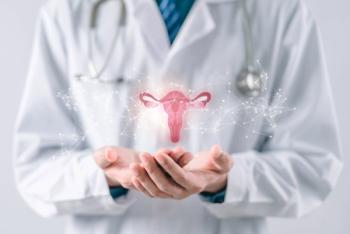
- Vol 66 No 4
- Volume Vol 66
- Issue No 04
Transdermal estrogen therapy and resistance training in postmenopausal women
“Women show an accelerated loss of muscle mass around menopause, possibly related to the decline in estrogen,” wrote the authors.
Transdermal estrogen therapy (ET) significantly increased skeletal muscle mass in response to 12 weeks of supervised, progressive resistance training among early postmenopausal women, study results show.
The Danish double-blinded randomized controlled study found an increase in muscle cross-sectional area of 7.9% in the ET group vs3.9% in the placebo group (P <.05).
Likewise, the increase in whole-body fat-free mass was 5.5% in the ET group vs 2.9% in the placebo group (P <.05).
“Women show an accelerated loss of muscle mass around menopause, possibly related to the decline in estrogen,” the study authors wrote. “Furthermore, the anabolic response to resistance exercise seems to be hampered in postmenopausal women.”
The investigators tested the hypothesis that ET amplifies the skeletal muscle response to resistance training in early postmenopausal women.
For the study, which was conducted at the Department of Public Health at Aarhus University in Denmark, 32 healthy, postmenopausal women no more than 5 years past menopause who were not doing resistance training were recruited.
The primary outcome was the impact of resistance training on a cross-sectional area of quadriceps femoris measured by MRI. Secondary parameters were fat-free mass determined by dual-energy x-ray absorptiometry, muscle strength, and functional tests.
Transdermal 17-β estradiol or placebo patches were given to the participants in a closed, nontransparent envelope. The patch was placed on the skin on the lower part of the abdomen at the start of the intervention. The patch was renewed twice a week.
The ET patch released 100 μg 17-β-estradiol every 24 hours. After intervention, participants in the ET group were offered 10 days of treatment with progesterone.
One participant did not attend the initial test and start of the intervention; the remaining 31 women (ET n=15; placebo n=16) completed the intervention period and tests.
The training program of 36 sessions over 12 weeks was based on the guidelines of the American College of Sports Medicine. Each training session started with a standardized warmup consisting of 5 minutes of light cycling, light running, or light rowing, followed by 6 resistance exercises.
The training concentrated on the lower extremities, including 3 leg exercises on resistance training machines: leg press, knee extension, and knee flexion.
The 3 other exercises were dumbbell triceps extension, sit-ups, and back extensions.
The program was designed progressively to avoid overload injuries, and all training sessions were supervised to ensure proper load resistance during the exercises, technique, and adherence to the program.
Handgrip strength increased in the ET group (P <.05) but did not change in the placebo group.
Muscle strength parameters, jumping height, and finger strength all improved after the training period, with no difference between the 2 groups.
Despite the ET group receiving a somewhat substantial dose of estradiol, their follicle-stimulating hormone (FSH) and luteinizing hormone (LH) levels did not reach premenopausal levels (<15 IU/L). “Thus, it can be speculated that a higher dose of estradiol would have led to even more pronounced effects on muscle mass and function,” the authors wrote.
The authors stated that future training studies should clarify if the combination of training and ET causes a greater positive effect on skeletal muscle mass and strength than training or ET alone.
__
Source
Dam TV, Dalgaard LB, Ringgaard S, et al. Transdermal estrogen therapy improves gains in skeletal muscle mass after 12 weeks of resistance training in early postmenopausal women. Front Physiol. Published online January 18, 2021. doi:10.3389/fphys.2020.596130
Articles in this issue
over 4 years ago
Gynecologic Care Needs to Improve in Women With Down Syndromeover 4 years ago
Dermatoses of Pregnancyover 4 years ago
Evaluation & Management of COVID-19 in Pregnancyover 4 years ago
Take Note: Lessons from a Doctoralmost 5 years ago
Fractional CO2 laser therapy for vulvovaginal atrophyNewsletter
Get the latest clinical updates, case studies, and expert commentary in obstetric and gynecologic care. Sign up now to stay informed.










